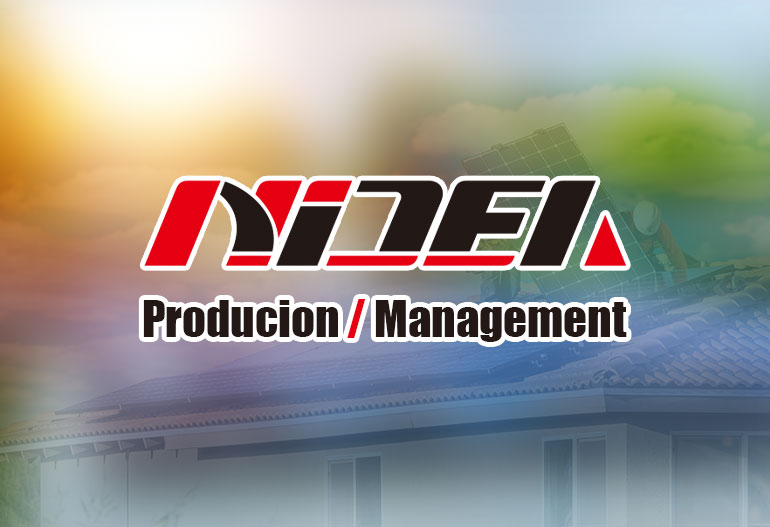MAX Series Off-Grid Inverters: Liberating Solar Power from Grid Dependence
DC-to-AC Conversion: Solar panels and batteries produce DC electricity, but most appliances require AC. The inverter efficiently converts DC to AC, ensuring compatibility with standard 110V/220V devices.
Voltage and Frequency Regulation: Fluctuations in solar input (due to cloud cover, time of day) or sudden changes in load (e.g., turning on a high-power appliance) can destabilize voltage and frequency. The inverter maintains stable output to protect sensitive electronics.
Battery Management: It controls the charging and discharging of batteries to prevent overcharging (which reduces battery lifespan) and deep discharging (which can damage cells).
Load Management: In off-grid systems, energy is a limited resource. Advanced inverters prioritize critical loads (e.g., medical equipment) during low battery conditions, ensuring essential services remain operational.
Advanced MPPT (Maximum Power Point Tracking): Solar panels operate most efficiently at a specific voltage (the maximum power point), which varies with sunlight intensity and temperature. The MAX series uses adaptive MPPT algorithms to continuously optimize panel output, increasing energy harvest by 10–15% compared to conventional inverters.
Low Standby Power Consumption: Even when idle, inverters consume small amounts of power. The MAX series reduces standby losses to less than 0.5W, ensuring minimal energy waste during periods of low activity.
Lead-Acid Batteries: The most common type in off-grid systems, with variants like flooded, sealed, and gel. The inverter adjusts charging profiles to match each battery type, extending lifespan by preventing overcharging.
Lithium-Ion Batteries: Growing in popularity due to higher energy density and longer cycle life. The MAX series supports lithium-iron-phosphate (LiFePO4) and other lithium chemistries, with smart charging algorithms that optimize for their unique voltage and current requirements.
Hybrid Battery Banks: For systems combining multiple battery types, the inverter balances charging and discharging to maximize overall system performance.
Programmable Load Priority: Users can classify loads as "critical" (e.g., refrigerators, lighting) or "non-critical" (e.g., air conditioners). During low battery levels, the inverter automatically disconnects non-critical loads to preserve power for essentials.
Overload and Short-Circuit Protection: Sudden spikes in current (e.g., from a faulty appliance) can damage the inverter or batteries. The MAX series detects such events in milliseconds, shutting down safely to prevent damage.
Temperature Adaptability: Extreme temperatures (both hot and cold) affect inverter performance. The MAX series operates reliably in environments ranging from -25°C to 60°C, with built-in thermal management that adjusts fan speed or reduces output to prevent overheating.
Mobile App Connectivity: Users can monitor system performance (solar input, battery level, load consumption) in real time via a smartphone app. Alerts are sent for low battery, inverter faults, or unusual load patterns.
Cloud-Based Data Analytics: Historical data on energy production and usage is stored in the cloud, enabling users to optimize system sizing or identify inefficiencies (e.g., high energy consumption during peak hours).
Remote Configuration: Engineers can adjust inverter settings (e.g., charging voltage, load priority) remotely, reducing the need for on-site visits and minimizing downtime.
Basic Needs: Lighting, mobile phone charging, and small appliances (e.g., radios, televisions).
Productive Uses: Powering water pumps for irrigation, small-scale farming equipment, or community workshops, boosting local economies.
Healthcare: Ensuring clinics have reliable power for refrigerating vaccines, operating medical devices, and lighting examination rooms.
Off-Grid Homes: Small to medium-sized systems (5–20 kW) powering entire households, including high-demand appliances like washing machines and electric stoves.
RVs and Boats: Compact MAX series models (1–3 kW) convert solar energy stored in batteries to AC, enabling off-grid travel without relying on campground hookups or generators.
Cabin Retreats: Remote cabins for vacation or research can operate entirely on solar power, with the inverter ensuring stable energy for heating, lighting, and communication devices.
Residential Settings: Homeowners with solar + battery systems can switch to off-grid mode during outages, maintaining power for refrigeration, medical equipment, and communication.
Critical Infrastructure: Hospitals, emergency shelters, and water treatment plants use large-scale MAX series inverters (50+ kW) to ensure uninterrupted operation during crises.
Disaster Relief: Portable solar kits with MAX series inverters are deployed to disaster zones, providing immediate power for rescue operations, temporary clinics, and relief camps.
Mining Camps: Powering heavy machinery, lighting, and worker accommodations in remote mining sites, reducing diesel consumption and carbon emissions.
Agricultural Irrigation: Solar-powered water pumps, controlled by MAX series inverters, provide a reliable water supply for crops in areas with no grid access.
Telecommunication Towers: Remote cell towers use solar + battery systems with MAX series inverters to maintain connectivity in underserved regions, ensuring communication networks remain operational.
Fuel Independence: Solar energy is free, eliminating ongoing fuel costs. A typical diesel generator for a rural community costs
0.50 per kWh, while solar with a MAX series inverter drops this to0.30–0.20 per kWh over the system’s 20+ year lifespan.0.10–
Low Maintenance: The MAX series has no moving parts, reducing maintenance needs compared to generators (which require regular oil changes, filter replacements, and engine overhauls).
Long Lifespan: With a design life of 15–20 years, the inverter outlasts most batteries, ensuring consistent performance with minimal replacement costs.
Zero Emissions: Solar power produces no carbon dioxide, sulfur dioxide, or particulate matter, improving air quality and mitigating climate change. A 5 kW MAX series system reduces CO₂ emissions by approximately 6 tons per year compared to a diesel generator.
Reduced Noise Pollution: Unlike generators, which produce 60–100 decibels of noise, the MAX series operates quietly (below 50 decibels), making it suitable for residential areas and wildlife-sensitive regions.
Sustainable Energy Use: By maximizing solar energy harvest through MPPT technology, the inverter minimizes waste, ensuring every ray of sunlight is put to productive use.
All-Weather Performance: Its rugged design resists dust, moisture, and extreme temperatures, ensuring operation in desert, tropical, and high-altitude environments.
Redundancy Options: For critical applications, multiple MAX series inverters can be connected in parallel, providing redundancy—if one unit fails, others continue to supply power.
Battery Optimization: By preventing overcharging and deep discharging, the inverter extends battery life by 20–30%, reducing the frequency of replacements and ensuring power availability when needed most.
System Sizing: The inverter must be sized to match the solar array and battery bank. A general rule is to select an inverter with a capacity 1.2–1.5 times the total solar panel wattage (e.g., a 5 kW array pairs with a 6–7.5 kW inverter).
Ventilation: Inverters generate heat during operation, so they should be installed in well-ventilated areas, away from direct sunlight and sources of heat.
Wiring and Grounding: Correct wiring (using appropriately sized cables) and grounding prevent voltage drops and electrical hazards. The MAX series includes detailed wiring diagrams for different system configurations.
Cleaning: Dust and debris can accumulate on the inverter’s vents, reducing cooling efficiency. Monthly cleaning with a soft brush or compressed air is recommended.
Battery Checks: The inverter’s monitoring system provides battery health data, but periodic manual checks (e.g., measuring voltage, inspecting for corrosion) ensure early detection of issues.
Firmware Updates: Manufacturers release firmware updates to improve performance or add features. These can be installed remotely via the mobile app or cloud platform.
Low Energy Production: Check for shading on solar panels, dirty panels, or MPPT malfunctions (resolved by resetting the inverter or updating firmware).
Battery Over-Discharge: This may indicate an undersized battery bank or excessive load. Adjust load usage or upgrade the battery system.
Inverter Shutdowns: Overload, overheating, or short circuits are common causes. Identify and resolve the issue (e.g., reducing load, improving ventilation) before restarting.
Integration with Smart Grids: While off-grid by design, future models could connect to microgrids, enabling energy sharing between neighboring systems.
AI-Powered Predictive Maintenance: Machine learning algorithms could analyze system data to predict inverter or battery failures before they occur, reducing downtime.
Higher Power Density: Miniaturized components may allow for smaller, lighter inverters with the same or higher capacity, simplifying installation in space-constrained environments.

